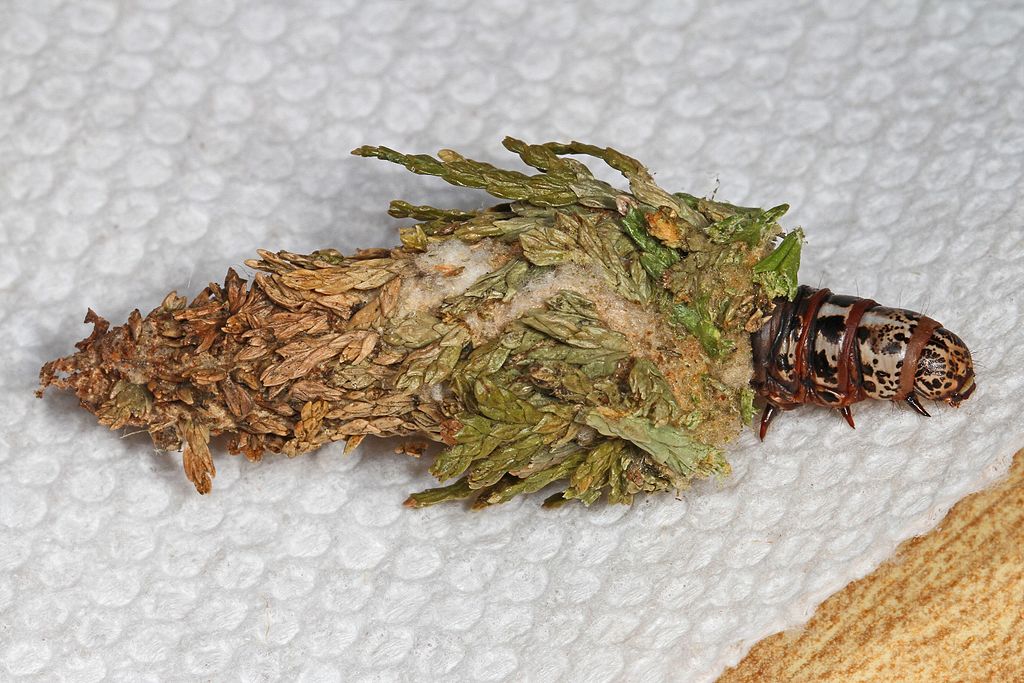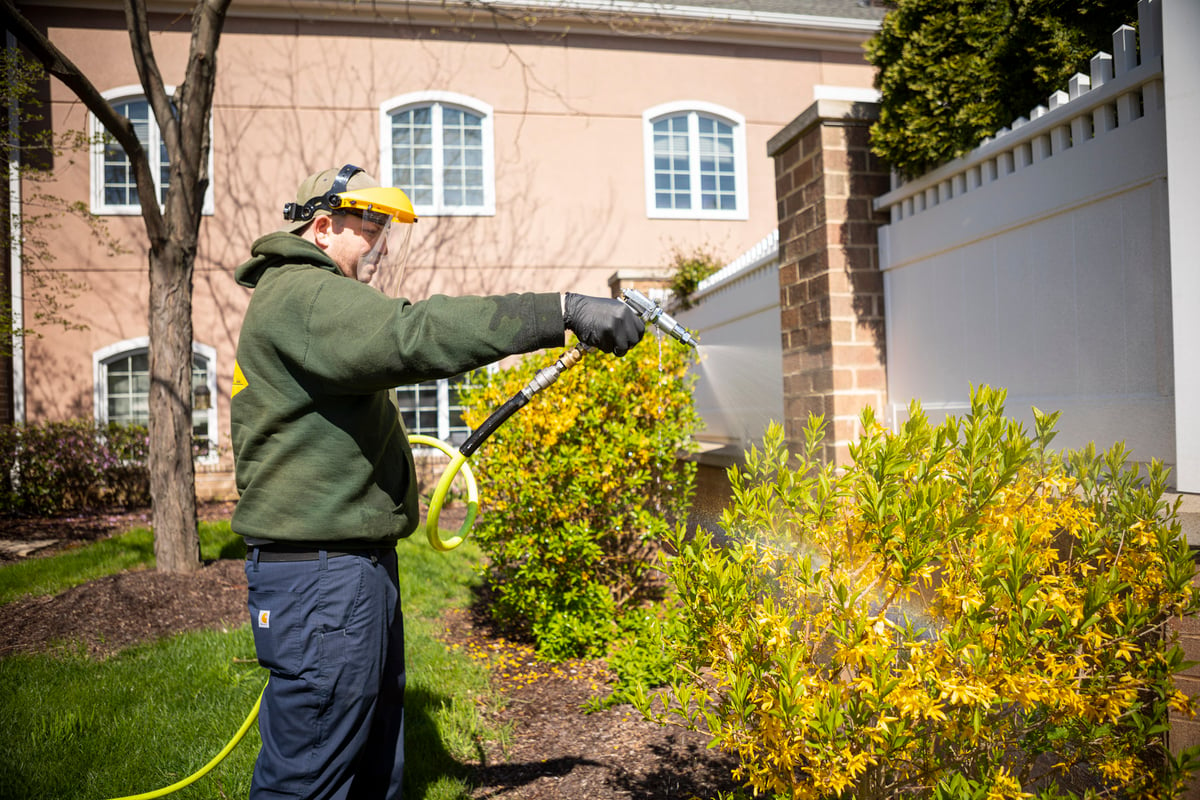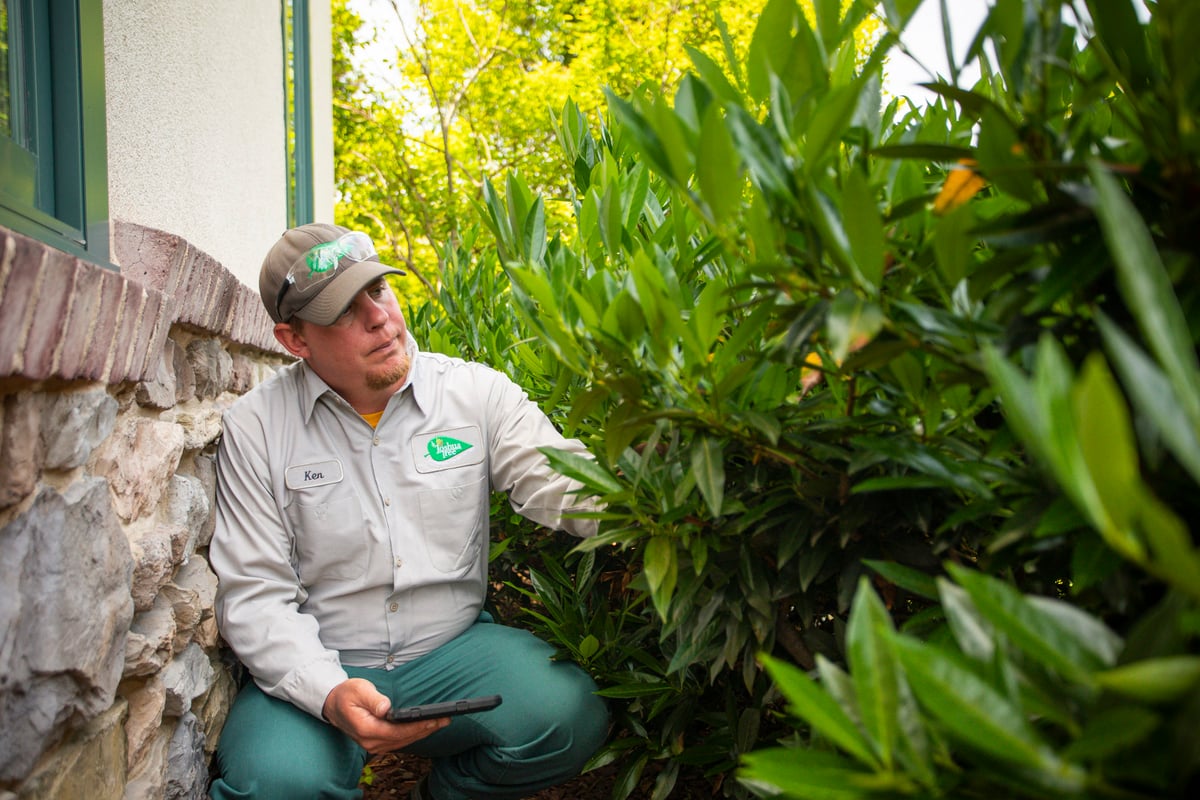If you have shrubs on your property that are turning brown, you might be wondering what’s causing the problems.
Unfortunately, landscape plants are subject to a number of potential issues that could be leading to this trouble.
In this article, we’ll dive into what causes shrubs to turn brown.
After all, we understand that your landscape is important to you and you want to see it perform well for many years to come.
Why Are My Shrubs Turning Brown and Dying?
There is no one simple answer to “Why are my shrubs turning brown?”
The truth is, there could actually be a number of potential reasons why this is occurring.

Let’s look at some of the most common culprits.
Watering Problems
Both overwatering and underwatering can cause a shrub to eventually turn brown. While most people tend to think of underwatering as being a key problem, too much water can also cause trouble.
Typically, before a shrub turns brown, it will go through other changes first. Here are a few that you may notice for an underwatered or overwatered tree.
Early signs of an underwatered shrub:
- Dry soil
- Leaves turning yellow (first)
- Leaves looking wilted, curled, or falling off
Early signs of an overwatered shrub:
- Soil is soggy
- Young leaves turn light green or yellow (first)
- Leaves are brittle
- You see moss, algae, or mushrooms growing around the base of the plant
A shrub can only withstand watering troubles for so long. Eventually, they will start to turn brown. They could also die if the problem is not corrected.
Pest Problems
Unfortunately, there are a lot of different pests in the landscape that could also be at the heart of your tree worries. Scale insects, Spotted Lanternflies, Spider Mites, Bagworms, and other shrub pests can do a lot of damage if left untreated in the landscape.
Many of these pests use their piercing mouthparts to suck sap from your shrubs, which will eventually cause them to turn brown. But some pests feed upon your shrub’s foliage, leading to defoliation.

You might notice other symptoms before assuming “My shrubs are dying.”
For instance, you might see sticky sap oozing from your shrub which will attract other pests like ants or wasps. Or, you might notice holes in the leaves of your shrub.
The earlier that you notice a problem, the faster it can be treated. You might even be able to avoid your shrubs turning brown.
Disease Problems
There are also a number of different shrub diseases that can cause your shrubs to turn brown over time.

Just like pest problems, there might be early signs of disease prior to turning brown. For instance, you might see leaves prematurely falling off or you might notice wilting branches. Shrubs might also turn other colors like light green or yellow ahead of turning brown.
Anytime that you spot a problem, it’s best to act quickly. A tree care professional can help make a proper diagnosis so that you can get the right treatment underway.
Environmental Conditions
As far as what causes shrubs to turn brown, it could also be the environmental conditions like a sudden change in temperature.
A sudden drop in temperature after your shrub has come out of dormancy can cause it to stop growing suddenly.

This happens sometimes in the early spring when the weather is warming up and then it suddenly takes a big dip.
But extreme heat can do the same thing. In scorching temperatures, a shrub may end up turning brown.
What to Do When Shrubs Turn Brown
It’s upsetting when shrubs turn brown. We know that people automatically assume your shrubs are dying.
While a brown shrub could potentially be dying (or dead), that’s not always the case. A brown shrub could still have some live growth and will bounce back with some TLC. Inspect your shrubs for any sign of green growth.
If your shrub turned brown because of weather conditions, it can potentially bounce back as the extreme weather subsides. Try your best to protect plants from early spring freezes by covering them with blankets or sheets.
If your shrub turned brown due to extreme heat, start by watering the roots slowly.
The good news is that many times, shrubs do bounce back. However, whether or not your shrub can be revived will largely have to do with what caused it to turn brown in the first place. A tree care professional can help you to make a proper diagnosis so that you can implement the right treatment.
It’s also not uncommon for a shrub to potentially have more than one issue going on at once. This is why a proper diagnosis is so important.
Hiring a Professional Plant Health Care Service
Going forward, you can aim to prevent some problems by investing in a proactive Plant Health Care program.
While Plant Health Care is not a magic bullet or a cure-all solution, it can help prevent plants from succumbing to certain problems by boosting their overall health. You’ll feel confident that even if your plant faces an issue, it will be more likely to bounce back.
On the other hand, a shrub that is already struggling is only going to get sicker when faced with potential problems.
Once on the program, you can also gain peace of mind that your landscape as a whole is part of a proactive approach meant to catch and diagnose problems early and prevent small problems from becoming large ones.
At Joshua Tree Experts, we always have a close eye on your property when we’re there and by partnering with you (and your new early diagnostic skills thanks to these tips), we’ll be able to tackle problems that challenge the health of your property and protect some of your property’s most important assets.
With the right care for your trees, you’ll gain valuable peace of mind. If you’re interested in having your trees inspected and their health assured, contact us for a free consultation or give us a call at 833-JTE-TREE.
Image Source: garden hose, bagworm



